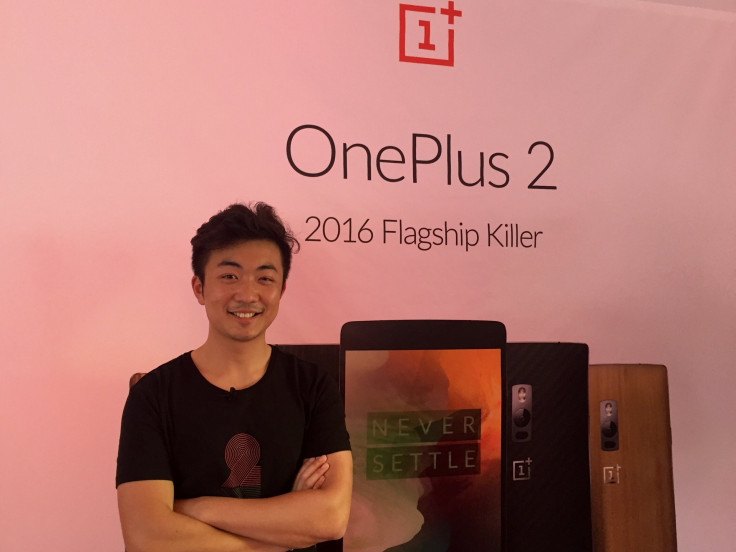OnePlus Co-Founder Carl Pei On Competing With Apple Inc., His Company’s Success, And How They Broke America

OnePlus was founded less than two years ago, and its only phone, the OnePlus One, arrived in April 2014. By the end of the year, the startup based in Shenzhen, China, had sold nearly a million phones with about 20 percent sold in the U.S. Now, with the OnePlus 2, they’re back.
“We were never focused on growing, or selling x amount of units. We think if you focus on that you’ll end up pursuing short-term goals,” said co-founder Carl Pei, in an interview with International Business Times. “If you focus on making the best product, and treating customers well, then you’ll do well.”
OnePlus was different from other smartphone manufacturers in two key ways: it was sold exclusively through the internet, not through wireless carriers, and initially you had to have an invite to buy one. On Friday, OnePlus held its first launch event in the U.S. in New York's Times Square, where the startup handed out coveted invites to buy the phone.
Pei says OnePlus focuses on a holistic approach to its devices: instead of checking off boxes on a spec sheet, it’s about how the entire phone feels to use. “If you ask people which phone manufacturer is the most product focused, people usually say Apple. But when you ask for the number two, there’s no single answer,” he said. “So that’s where we saw an opportunity in the Android space.”
Pei cites the attention to detail as what sets OnePlus apart. The OnePlus 2’s USB cable can be plugged in either way, similar to Apple’s Lightning cable or newer USB-C cables. Four-hundred out of its 900 employees work in research and development, filing patents and working to develop new ideas on both the hardware and software side. The company also wants to be at the forefront of pushing new standards, so the OnePlus 2 device uses USB-C for connectivity.
The OnePlus 2 comes with OxygenOS, which for all intents and purposes is a modified version of Android 5.1 Lollipop. The company took Android, and gave it the same attention to detail that they felt was missing in competitors. The phone has a 5.5-inch screen, and it can be quite difficult to pull down notifications from the top. But in OxygenOS, the user can pull notifications from any part of the screen, a sign of how the hardware and software are designed together.
Other Chinese manufacturers haven’t been so lucky. Xiaomi, another Chinese smartphone manufacturer, is the world’s fourth largest distributor, but it has yet to break into the U.S. market.
Pei said he does not see OnePlus as a "Chinese" company. “We have 15 countries represented in our offices, and we are doing a worldwide launch,” he said. The Internet is intrinsic to the company’s setup, both on consumer satisfaction and communication between its worldwide offices. “A company like this wouldn’t have been possible before,” he added.
Another strength for OnePlus’ has been direct-to-consumer sales, bypassing the carriers to have direct contact with the customer, cutting out middlemen. On Tuesday, Motorola announced that its new Moto X flagship devices would follow the same model. “It’s super shocking,” said Pei. “As a 2-year-old company, having a hundred-year-old company following in your footsteps … it’s very humbling.”
OnePlus initially invited consumers to purchase the phone, before opening it up to wider availability, which generated scarcity and hype. But according to Pei, “It’s purely a way to manage inventory,” he explained. “We’re going to lose money on unsold inventory, and then what happens is we would have to sell the phones at a discount, which would cause a loss.”
The 64GB OnePlus 2 launches on Aug. 11 in the U.S. for customers who have an invite. The phone costs $389, and the company will launch a $329 16GB version later this year.
© Copyright IBTimes 2024. All rights reserved.






















